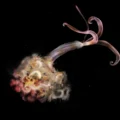ATLANTA, Nov. 11, 2023. CB, a global biopharmaceutical company, will present a post hoc analysis of the EXXELERATE trial examining the efficacy of CIMZIA (certolizumab pegol) and adalimumab in patients with rheumatoid arthritis (RA) with high rheumatoid factor (RF) levels. The data are being presented at the American College of Rheumatology (ACR) Convergence 2023 in San Diego, November 10–15.1
In the initial EXXELERATE trial comparing the efficacy of CIMZIA and adalimumab, the primary endpoints of superiority were not met. In the post hoc analysis, efficacy outcomes in CIMZIA and adalimumab were assessed in patients with RA across RF subgroups.1 Patients were randomized 1:1 to CIMZIA 200 mg every two weeks plus methotrexate (MTX) or adalimumab 40 mg every two weeks plus MTX. At Week 12, patients were classified as responders or non-responders, non-responders were switched to the other TNFi with possible follow-up to Week 104. Results showed that for patients in the higher RF quartile, 65.7 percent of 453 patients treated with CIMZIA and 48.3 percent of 454 patients treated with adalimumab achieved low disease activity at Week 104.1
“It is well known that high rheumatoid factor (RF) levels are associated with a poor prognosis.2 In addition, high RF levels may lead to decreased drug concentrations of monoclonal antibodies and potentially lower response to TNFis in patients with rheumatoid arthritis (RA).1,3 The results of this analysis highlight how, through its fragment crystallizable (Fc)-free molecular structure, certolizumab pegol maintained constant blood concentrations and therapeutic responses regardless of RF levels,” said Professor Josef Smolen, Emeritus Professor of Internal Medicine, Medical University of Vienna, Division of Rheumatology, Vienna, Austria. “These data may be of clinical relevance in the context of using a personalized medicine approach for patients with RA and high RF levels.”1
RA is a chronic disease that causes inflammation throughout the body and commonly presents as joint pain, swelling, and deformity, which results in a decline in physical function and quality of life.4,5 It is estimated that, as of 2021, approximately 1.5 million people in the United States live with this disease.6 High RF is associated with a more aggressive and destructive disease course, which is often more difficult to treat.7 One reason for this is the high levels of RF autoantibodies binding with the Fc parts of TNFis to form large immune complexes that are then degraded by macrophages, resulting in lower bioavailability of biologic drugs.8,9
To treat RA when high RF levels are present, American College of Rheumatology guidelines recommend biologic disease-modifying anti-rheumatic drugs (bDMARDS) if there is no observed improvement with MTX treatment.10 However, many bDMARDs such as TNFis contain an Fc region that RF antibodies bind to, which can result in a lower clinical efficacy and the need for additional interventions.11,12,13 The distinctive, FC-free structure of CIMZIA means RF may not bind to the drug, allowing its concentration to remain stable over time.14
“At UCB, we aspire to achieve long-lasting drug-free remission for as many patients living with rheumatoid arthritis (RA) as possible,” said Emmanuel Caeymaex, Executive Vice President, Immunology Solutions & Head of U.S., UCB. “The data presented at this year’s ACR Convergence demonstrate the benefits of certolizumab pegol, as it continues to deliver value for those with high unmet need, late into its lifecycle and beyond. We are excited to continue exploring its scientific potential as a personalized solution for RA patients with high levels of Rheumatoid Factor (RF).”1
About the EXXELERATE trial methodology and patient population
In patients with RA, high RF levels are considered a poor prognostic factor and are associated with higher disease activity, risk of radiographic progression, and decreased response to TNF inhibitors (TNFis).7 Recent data suggest that patients with RA and high RF levels may achieve and maintain greater clinical improvement with TNFis without a crystallizable fragment (Fc) compared with TNFis with an Fc.12 In this post hoc analysis of the EXXELERATE trial, we assessed efficacy outcomes of CIMZIA (CZP), a PEGylated, Fc-free TNFi, and adalimumab (ADA; Fc-containing TNFi) in patients with RA across different RF levels.1
About CIMZIA in the U.S.15
CIMZIA is the only Fc-free, PEGylated anti-TNF (tumor necrosis factor). CIMZIA has a high affinity for human TNF-alpha, selectively neutralizing the pathophysiological effects of TNF-alpha.
CIMZIA is also indicated for the treatment of adults with moderately to severely active rheumatoid arthritis (RA), adults with active psoriatic arthritis (PsA), adults with active ankylosing spondylitis (AS), and adults with active non-radiographic axial spondyloarthritis (nr-axSpA) with objective signs of inflammation.
CIMZIA is indicated for the treatment of moderate-to-severe plaque psoriasis (PSO) in adults who are candidates for systemic therapy or phototherapy.
In addition, CIMZIA is indicated for reducing signs and symptoms of Crohn’s disease (CD) and maintaining clinical response in adult patients with moderately to severely active disease who have had an inadequate response to conventional therapy.
About UCB
UCB, Brussels, Belgium is a global biopharmaceutical company focused on the discovery and development of innovative medicines and solutions to transform the lives of people living with severe diseases of the immune system or of the central nervous system. With approximately 8,700 people in approximately 40 countries, the company generated revenue of €5.5 billion in 2022 UCB is listed on Euronext Brussels (symbol: UCB). Follow us on Twitter: @UCBUSA.
Forward looking statements
This press release may contain forward-looking statements including, without limitation, statements containing the words “believes”, “anticipates”, “expects”, “intends”, “plans”, “seeks”, “estimates”, “may”, “will”, “continue” and similar expressions. These forward-looking statements are based on current plans, estimates and beliefs of management. All statements, other than statements of historical facts, are statements that could be deemed forward-looking statements, including estimates of revenues, operating margins, capital expenditures, cash, other financial information, expected legal, arbitration, political, regulatory or clinical results or practices and other such estimates and results. By their nature, such forward-looking statements are not guarantees of future performance and are subject to known and unknown risks, uncertainties and assumptions which might cause the actual results, financial condition, performance or achievements of UCB, or industry results, to differ materially from those that may be expressed or implied by such forward-looking statements contained in this press release. Important factors that could result in such differences include: changes in general economic, business and competitive conditions, the inability to obtain necessary regulatory approvals or to obtain them on acceptable terms or within expected timing, costs associated with research and development, changes in the prospects for products in the pipeline or under development by UCB, effects of future judicial decisions or governmental investigations, safety, quality, data integrity or manufacturing issues; potential or actual data security and data privacy breaches, or disruptions of our information technology systems, product liability claims, challenges to patent protection for products or product candidates, competition from other products including biosimilars, changes in laws or regulations, exchange rate fluctuations, changes or uncertainties in tax laws or the administration of such laws, and hiring and retention of its employees. There is no guarantee that new product candidates will be discovered or identified in the pipeline, will progress to product approval or that new indications for existing products will be developed and approved. Movement from concept to commercial product is uncertain; preclinical results do not guarantee safety and efficacy of product candidates in humans. So far, the complexity of the human body cannot be reproduced in computer models, cell culture systems or animal models. The length of the timing to complete clinical trials and to get regulatory approval for product marketing has varied in the past and UCB expects similar unpredictability going forward. Products or potential products, which are the subject of partnerships, joint ventures or licensing collaborations may be subject to differences disputes between the partners or may prove to be not as safe, effective or commercially successful as UCB may have believed at the start of such partnership. UCB’s efforts to acquire other products or companies and to integrate the operations of such acquired companies may not be as successful as UCB may have believed at the moment of acquisition. Also, UCB or others could discover safety, side effects or manufacturing problems with its products and/or devices after they are marketed. The discovery of significant problems with a product similar to one of UCB’s products that implicate an entire class of products may have a material adverse effect on sales of the entire class of affected products. Moreover, sales may be impacted by international and domestic trends toward managed care and health care cost containment, including pricing pressure, political and public scrutiny, customer and prescriber patterns or practices, and the reimbursement policies imposed by third-party payers as well as legislation affecting biopharmaceutical pricing and reimbursement activities and outcomes. Finally, a breakdown, cyberattack or information security breach could compromise the confidentiality, integrity and availability of UCB’s data and systems.
Given these uncertainties, you should not place undue reliance on any of such forward-looking statements. There can be no guarantee that the investigational or approved products described in this press release will be submitted or approved for sale or for any additional indications or labelling in any market, or at any particular time, nor can there be any guarantee that such products will be or will continue to be commercially successful in the future.
UCB is providing this information, including forward-looking statements, only as of the date of this press release. UCB expressly disclaims any duty to update any information contained in this press release, either to confirm the actual results or to report or reflect any change in its forward-looking statements with regard thereto or any change in events, conditions or circumstances on which any such statement is based, unless such statement is required pursuant to applicable laws and regulations.
Additionally, information contained in this document shall not constitute an offer to sell or the solicitation of an offer to buy any securities, nor shall there be any offer, solicitation or sale of securities in any jurisdiction in which such offer, solicitation or sale would be unlawful prior to the registration or qualification under the securities laws of such jurisdiction.
Abbreviations: ACR: American College of Rheumatology, bDMARDS: biologic disease-modifying anti-rheumatic drugs, AS: Ankylosing spondylitis, axSpA: Axial spondyloarthritis, CRP: C-reactive protein, DMARDs: disease-modifying antirheumatic drugs, EEA: European Economic Area, EU: European Union, MRI: Magnetic Resonance Imaging, NSAIDS: non-steroidal anti-inflammatory drugs, HBV: hepatitis B, Fc: fragment crystallizable, MTX: methotrexate, RA: rheumatoid arthritis, RF: rheumatoid factor, TNFis: tumor necrosis factor-α inhibitors, UCB: Union Chimique Belge.
References
1 Smolen J, Taylor P, Tanaka Y, et al. Do High RF Titers Impact Response to TNF Inhibitors? Comparison of Certolizumab Pegol and Adalimumab in Patients with RA and High Titers of RF: A Post Hoc Analysis of a Phase 4 Trial. Arthritis Rheumatol. 2023;75 (suppl 9). ACR Convergence 2023. 2148.
2 Albrecht K, Zink A. Poor prognostic factors guiding treatment decisions in rheumatoid arthritis patients: a review of data from randomized clinical trials and cohort studies. Arthritis Res Ther. 2017;19(1):1-8.
3 Tiwari V, Jandu JS, Bergman MJ. Rheumatoid Factor. In: StatPearls [Internet]. Treasure Island. 2023.
4 Sparks JA. Rheumatoid Arthritis. Ann Intern Med. 2019;170(1):ITC1-ITC16.
5 Smolen JS, Aletaha D, McInnes IB. Rheumatoid arthritis. Lancet. 2016;388:2023–38.
6 Arthritis Foundation (October 15, 2021). Rheumatoid Arthritis: Causes, Symptoms, Treatments and More. Available at: https://www.arthritis.org/diseases/rheumatoid-arthritis. Last accessed: October 2023.
7 Watanabe R, Hashimoto M, Murata K, et al. Prevalence and predictive factors of difficult-to-treat rheumatoid arthritis: the KURAMA cohort. Immunol Med. 2022;46(1):35-44.
8 Laurent L, Anquetil F, Clavel C, et al. IgM rheumatoid factor amplifies the inflammatory response of macrophages induced by the rheumatoid arthritis-specific immune complexes containing anticitrullinated protein antibodies. Ann Rheum Dis. 2015;74(7):1425-31.
9 Aletaha D, Alasti F, Smolen JS. Rheumatoid factor determines structural progression of rheumatoid arthritis dependent and independent of disease activity. Ann Rheum Dis. 2012;72(6):875-80.
10 Fraenkel L, Bathon JM, England BR, et al. 2021 American College of Rheumatology Guideline for the Treatment of Rheumatoid Arthritis. Arthritis Care Res (Hoboken). 2021;73(7):924-39.
11 Takeuchi T, Miyasaka N, Inui T, et al. High titers of both rheumatoid factor and anti-CCP antibodies at baseline in patients with rheumatoid arthritis are associated with increased circulating baseline TNF level, low drug levels, and reduced clinical responses: a post hoc analysis of the RISING study. Arthritis Res Ther. 2017;19(1):194.
12 Nakayama Y, Watanabe R, Murakami K, et al. Differential efficacy of TNF inhibitors with or without the immunoglobulin fragment crystallizable (Fc) portion in rheumatoid arthritis: the ANSWER cohort study. Rheumatol Int. 2022;42(7):1227-34.
13 Calvo Gutierrez J, Ortega Castro R, Ábalos-Aguilera MC, et al. Impact of baseline rheumatoid factor titers and anti-TNF molecular structure on the retention rate in patients with rheumatoid arthritis. Ann Rheum Dis. 2023;82:1400-1.
14 Senolt L. Emerging therapies in rheumatoid arthritis: focus on monoclonal antibodies. F1000Res. 2019;8:F1000 Faculty Rev-1549.
15 CIMZIA (certolizumab pegol) US Prescribing Information. Available at: Cimzia_09_11_2019_en.pdf (ucb.com). Last accessed: November 2023.
SOURCE UCB
Posted: November 2023
Related articles
- FDA Approves Cimzia (certolizumab pegol) for the Treatment for Non-Radiographic Axial Spondyloarthritis – March 29, 2019
- UCB Announces the Approval of Cimzia (certolizumab pegol) for Moderate-to-Severe Plaque Psoriasis – May 28, 2018
- Cimzia Approved by FDA for Treatment of Adults with Active Ankylosing Spondylitis – October 18, 2013
- FDA Approves Cimzia for Treatment of Adult Patients with Active Psoriatic Arthritis – September 30, 2013
- U.S. FDA Arthritis Advisory Committee Votes On Cimzia (certolizumab pegol) For Treatment of Adults with Active Axial Spondyloarthritis, Including Patients with Ankylosing Spondylitis – July 24, 2013
- UCB’s Cimzia (certolizumab pegol) Approved by the U.S. FDA for Adult Patients Suffering From Moderate to Severe Rheumatoid Arthritis – May 13, 2009
- UCB’s meeting with U.S. FDA defines path forward for Cimzia in rheumatoid arthritis – February 6, 2009
- UCB Receives Complete Response Letter from U.S. FDA for Use of Cimzia in Rheumatoid Arthritis Patients – January 5, 2009
- Cimzia Approved in the US for the Treatment of Moderate to Severe
Crohn’s Disease – April 22, 2008 - FDA Agrees to Review Cimzia File for the Treatment of Rheumatoid
Arthritis – February 6, 2008 - UCB Provides Update on Cimzia for Crohn’s Disease and Rheumatoid Arthritis in the US – March 23, 2007
- UCB Submits Biologics License Application to FDA for New Treatment in Crohn’s Disease – March 2, 2006
Cimzia (certolizumab pegol) FDA Approval History
More news resources
Subscribe to our newsletter
Whatever your topic of interest, subscribe to our newsletters to get the best of Drugs.com in your inbox.


















No Comments
Leave a comment Cancel